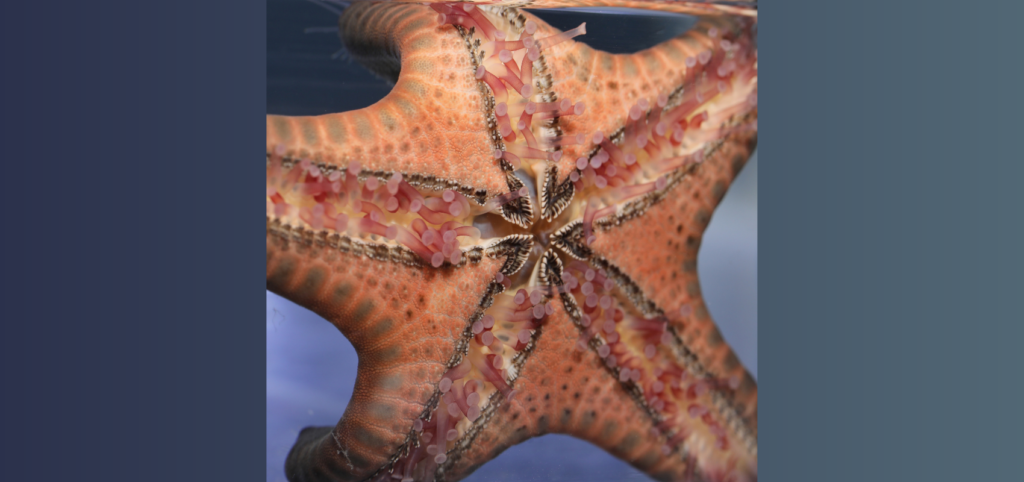
Matt McHenry
Irvine, Calif., April 16, 2024 — In a significant scientific breakthrough, researchers from the University of California, Irvine School of Biological Sciences, in collaboration with the University of Southern California, have shed light on the complex locomotion mechanisms of sea stars. This study, led by graduate student Theodora Po and Professor Matt McHenry of UCI, presents a fascinating look at how these creatures without a central brain coordinate their movements. Their findings, published in the journal Current Biology, not only challenge the traditional understanding of movement in radially symmetrical animals but also lay the groundwork for innovations in robotics and autonomous systems.
The research addresses a long-standing mystery in biology: how animals with radial symmetry, like sea stars, which lack a central brain, control their movement. Through innovative experiments, mathematical modeling and the development of robotic analogs, the team discovered that sea stars use the local control of their hundreds of tiny feet in conjunction with the mechanical interactions with their bodies to move.
Professor McHenry shared, “We tend to think of animal locomotion as being controlled ‘top-down,’ where the limbs receive commands that originate from the brain. But, what about animals that do not have a brain? This study reveals how control emerges in sea stars from the limbs making their own decisions and yet coordinating their motion through the mechanics of the body.”
Theodora Po, elaborating on the findings, said, “Our research demonstrated the importance of mechanics in animals with a relatively simple nervous system and complex motions. These decentralized control principles from our study have the potential for developing novel engineered devices with similar resilient capabilities.”
The study’s key discovery is that sea stars adjust to changes in their environment, such as increased weight, by synchronizing more tube feet to engage in movement, demonstrating a form of “cooperative transport.” This finding challenges the conventional understanding of animal locomotion and suggests a novel principle for designing robots that can respond to various loads without centralized control.
The potential applications of this research are vast, including the development of new types of robotic vehicles and engineered devices with multiple actuators. By harnessing the principles of decentralized control and cooperative transport, future technologies could become more robust and responsive to their environments.
The team encourages further research into this fascinating area, hoping to inspire both scientists and engineers to explore the possibilities of bio-inspired design. As society faces increasing challenges, from environmental conservation to the exploration of harsh or alien terrains, the insights from this study could lead to innovative solutions that improve lives and protect our planet.
About the University of California, Irvine School of Biological Sciences: Recognized for its pioneering research and academic excellence, the UCI School of Biological Sciences plays a crucial role in the university’s status among the nation’s top 10 public universities, as ranked by U.S. News & World Report. It offers a broad spectrum of degree programs in the biological sciences, fostering innovation and preparing students for leadership in research, education, medicine and industry. Nestled in a globally acclaimed and economically vibrant community, the school contributes to the university’s impact as Orange County’s largest employer and a significant economic contributor. Through its commitment to exploring life’s complexities, the School of Biological Sciences embodies the UCI legacy of innovation and societal impact. For more on the UCI School of Biological Sciences, visit bio.uci.edu.
